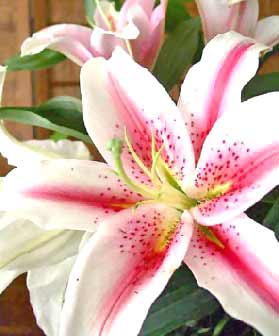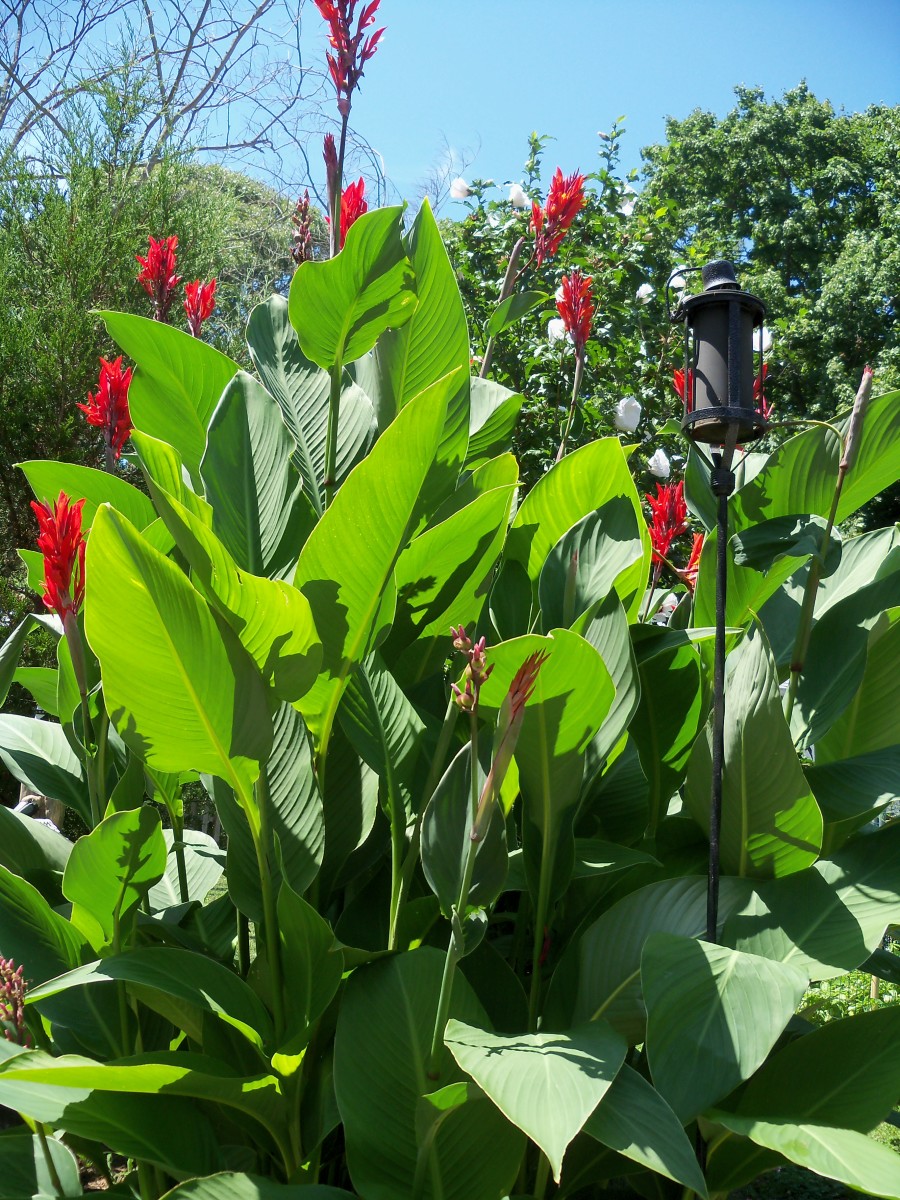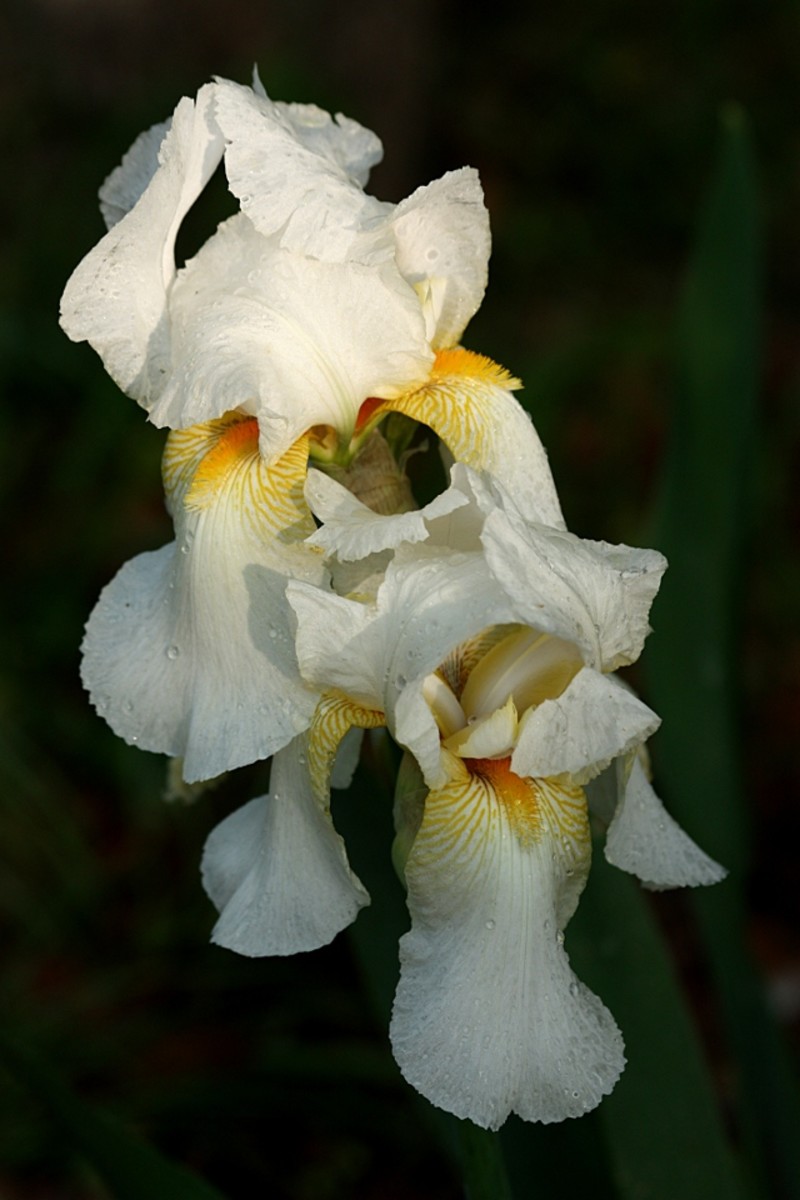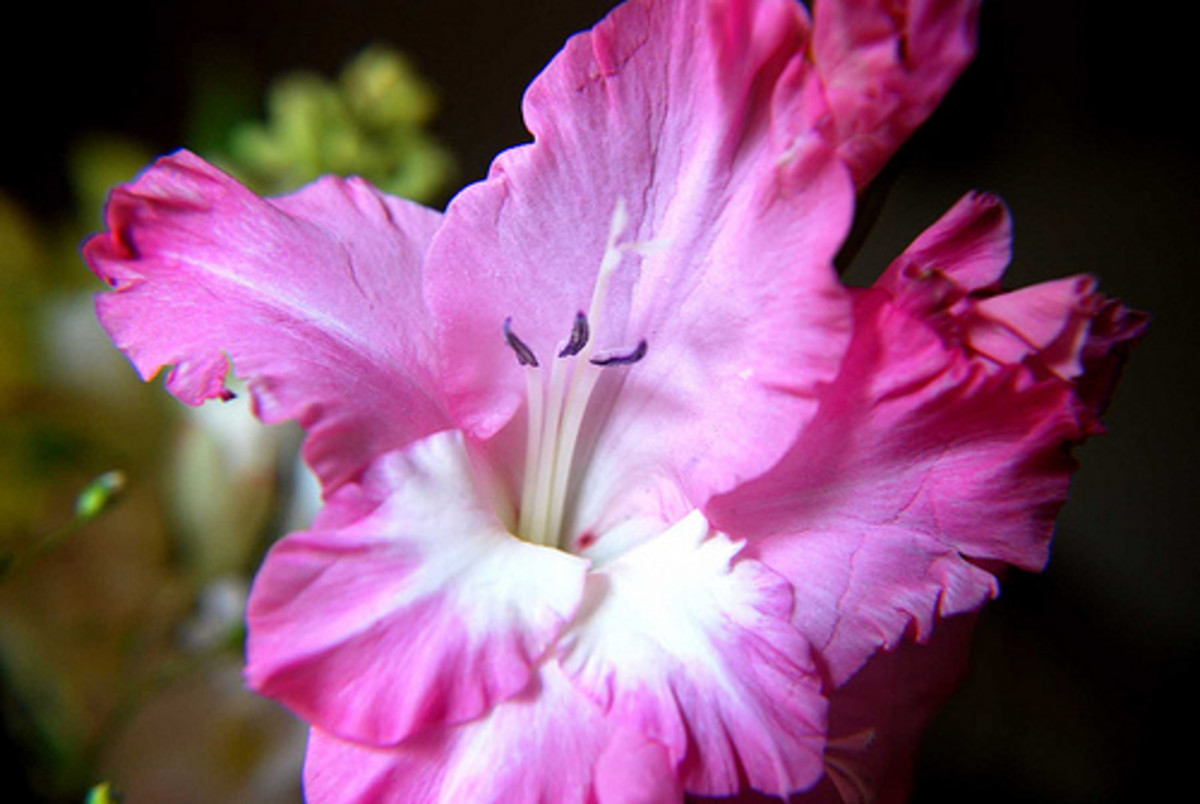Growing Beautiful Lilies
Lily Growing Tips and Help
Lilies are one of the most beautiful and fulfilling flowers to grow. With just a few tips anyone can grow them very well and be successful with this particular flower variety.
Not only are lilies fantastic to look at and a terrific addition to your garden and yard, they also give off a wonderful fragrance that enhances the experience of interacting with the flower. Anyone taking a whiff knows what an awesome experience that is.
The secret to growing lilies isn't that difficult, as it has to do with planting them in the right place so you can enjoy them year after year. Just take into consideration the specific zone you live in and adjust things accordingly.
Lilies require two major things as far as where you plant them. That includes an area that drains well, along with an area that takes in at least half a day of sun for the plant to flourish in.
If there isn't enough sun, the lily will reach for it and you'll have spindly and long stems that don't do this terrific flower justice or show off its strengths.
One other consideration for sun is if you live in a very hot climate, be sure to plant the lilies down deep so the bulb stays cool no matter what the temperature gets to. If you already have great bulbs and heat is a problem, don't hesitate to mulch your lilies, as they respond well to that practice when it gets too hot out.
Where to grow lilies
How do you identify a good spot to plant then, other than sun considerations? You should know your yard pretty good if you've lived there even a little while. Just be aware of where the drainage is best after a rain while still receiving rays from the sun for most of the day.
That will be the most favorable and successful place to put your lilies, and it'll help prevent the majority of problems that could develop otherwise.
Also place your plants far enough apart so they can dry easily after a rain and not pass on botrytis, a fungus, which can make the leaves look horrible with spots. You want your leaves to be able to dry quickly once the rain stops to help prevent that from happening.
Even if you do get some spots, the same fungicide you use on roses should work great for your lilies as well.
How to plant your lily bulbs
Now that you know where to plant your lily bulbs, let's now look at how to plant them.
A good rule of thumb to keep in mind in that regard is if you live in a milder climate, it's not so much the season you should take into consideration but when the soil is ready to plant the bulbs.
The soil is ready for your lily bulbs when the ground has softened from any type of winter freeze and is not clodded up.
When to plant your lily bulbs
Having said what I mentioned above about the condition of the ground being the key as to when to plant, you still have to take into consideration if it matters to you when your flowers begin to produce stems.
If you plant your lily bulbs in the fall and earlier part of winter, then the stems will come at the time they are expected to. Planting in the spring will result in stems which flower later, and could be shorter than if they were planted in fall or early winter. That is more likely to happen when and if hot weather approaches very quickly rather than gradually.
Don't be concerned if this bothers you though, as nature will correct it all. The next year during the winter, what is identified as the clock of the lily will reset, and the normal time the lily stem should bloom will be the result.
Photo of white and purple lily

Storage tricks for lilies
While it's always better to plant your bulbs as soon as possible, there are sometimes unexpected circumstances which make it impossible to do.
When that happens, you can store them in a cool area like a cellar or garage. Just make sure it's above 28 degrees Fahrenheit if you choose to do that.
Refrigerators are another place you can store them if there is nowhere else to do it. Just be sure to expose them to as little light as possible or else they'll begin to sprout on you. Once that happens they need to be put in the ground as soon as possible. So a dark and cool area above 28 degrees Fahrenheit is the ideal place to store bulbs in if you are forced to.
How deep to plant your lily bulbs
While lily bulbs don't respond very negatively in response to the depth you plant them, there are advantages to planting them from at least 4 inches to 6 inches deep.
But as mentioned, lily bulbs like to be cool in the hottest parts of the summer, so planting them at that depth should keep them at temperatures they prefer.
One way to plant at the right depth to be sure you get the proper drainage is to plant your lilies in a raised bed where they are equal to about 4 to 6 inches in depth, or even deeper (it won't hurt them). Then you'll get about as good as drainage as you can from how you plant them.
To help you picture this, just think of laying the bulbs at ground level and putting the soil on top of them. That's not only the way to picture it, but it's how it should be done as well.
One final element in planting lily bulbs is to be sure they're at least 6 inches apart when you do it to allow them room to breathe and dry out after rain.
Lily care
Lilies really don't need much care at all, depending on what you're growing them for. Some people grow lilies for show, and so adding fertilizer helps them reach their ultimate potential. Don't use much nitrogen, as you probably know you'll get a very leggy plant. Something similar to what you would use on a potato would work well.
Once your lily is up, there is very little care needed as far as watering goes, although if you have a particularly hot summer some of those identified as orientals will need some water during those times, and that can be cut back by mulching them as well. This happens because Orientals flower later in the year - August - and so need the water at that crucial time.
Cold weather coming?
If you're expecting a harsh winter or cold weather after planting, then the answer is to mulch your lily in order to protect it against those later frosts. As in other areas, trumpet lilies are especially vulnerable to this, so be especially cautious of that.
Cut lily flowers?
If you want to cut some lily flowers for your home or outside, understand that this is perfectly fine to do. Just be aware that the green part of the stem is what will help build up the plant the next year, so leave the bottom two-thirds of the plant alone when you're cutting for flowers off the lily plant.
Dividing a lily
Lilies are great, like many bulbs are, because they will eventually divide and multiply, adding a nice feature where you can increase the size of your lily garden to the desired length and width, or grow some new lilies in another area of your yard.
They will do this on their own of course, but when they thicken you will want to help them along by dividing them by hand and placing them where you want. This is best done in the early part of fall, usually in September and October.
Lily fun
So there you have it. A simple and fun way to plant and enjoy lilies no matter where you live.
Simply adjust these tips to your specific zone and conditions and then just enjoy these fantasic flowers as they bloom year after year for you.









